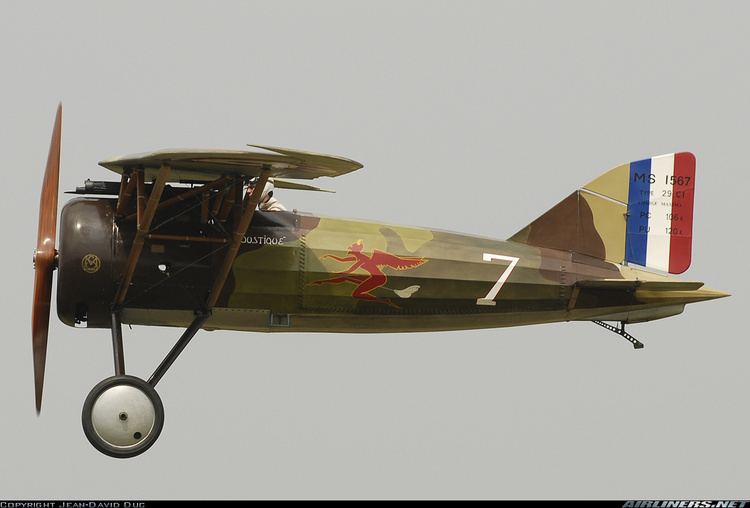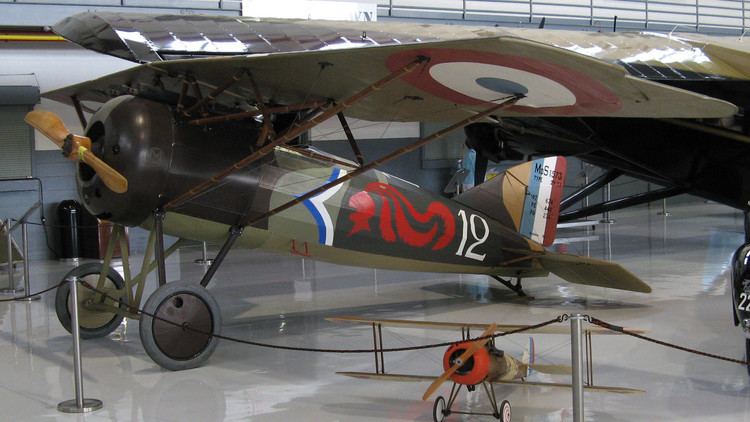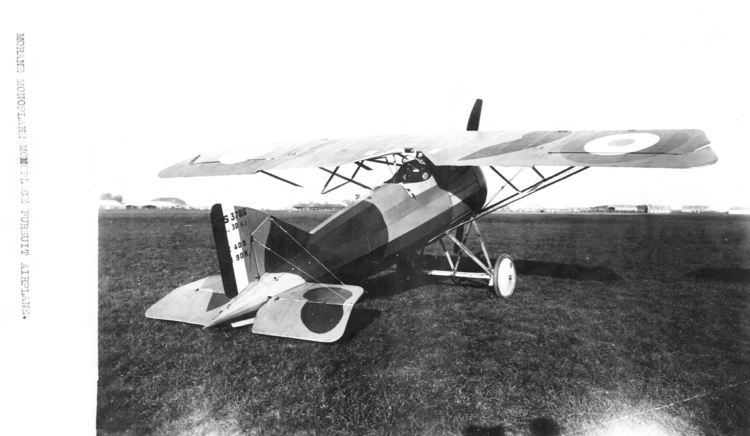Wingspan 8.51 m Length 5.65 m | Top speed 225 km/h | |
 | ||
1918 morane saulnier ai
The Morane-Saulnier AI (also Type AI) was a French parasol-wing fighter aircraft produced by Morane-Saulnier during World War I.
Contents
- 1918 morane saulnier ai
- Development and design
- Operational history
- Variants
- Operators
- Survivors
- Specifications MoS 27 C1 150 hp Monosoupape
- References
Development and design
The AI was developed as a refinement of the Morane-Saulnier Type N concept, and was intended to replace the Nieuport 17 and SPAD VII in French service, in competition with the SPAD XIII, which it was built as a back-up for. Its Gnome Monosoupape 9N 160 CV rotary engine was mounted in a circular open-front cowling. The strut braced parasol wing was swept back. The spars and ribs of the circular section fuselage were wood, wire-braced and covered in fabric, and faired out with wood stringers. The production aircraft were given service designations based on whether they had 1 gun (designated MoS 27) or 2 guns (designated MoS 29).
Operational history

A number of escadrilles were created to operate the AI, but by mid-May 1918, most of the aircraft were replaced by the SPAD XIII. After structural problems had been revolved, the aircraft were then relegated to use as advanced trainers, with new purpose built examples being designated as MoS 30. Many were used post-war after having been surplussed off, as aerobatic aircraft, including one which was flown by Charles Nungesser.
Fifty-one MoS 30s were purchased by the American Expeditionary Force as pursuit trainers.
Variants

Operators
In addition to military operators, the Morane-Saulnier AI was popular with French aerobatic pilots and a number carried civil registrations.
Survivors
Three AIs are flown from La Ferté-Alais.
The Fantasy of Flight collection in Polk City, Florida has an AI that was sold to the United States Army Air Service in 1918 for testing at McCook Field in Ohio until being sold off for private use. It later joined the Tallmantz Collection which was then acquired by Fantasy of Flight in 1985 and restored in the late 1980s.
Another AI, formerly flown by Charles Nungesser is in the Old Rhinebeck Aerodrome collection, and was flown in the weekend airshows there.
Specifications (MoS 27 C.1, 150 hp Monosoupape)
Data from War Planes of the First World War: Volume Five Fighters
General characteristics
Performance
Armament
